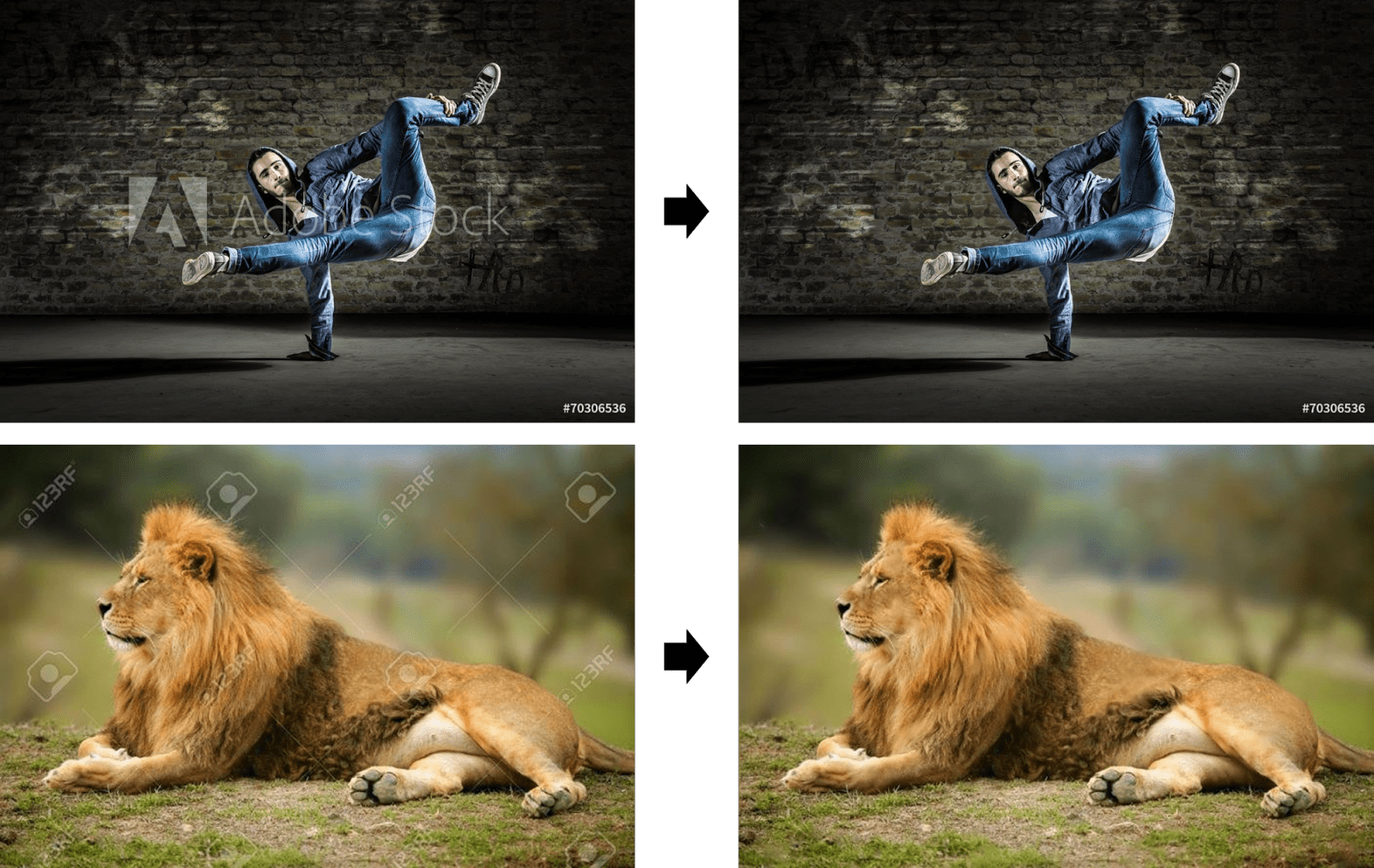iStock, a well-known stock photo agency, offers a vast library of high-quality images, illustrations, and videos for various uses. Whether you're a blogger, marketer, or designer, you can find the perfect visual to elevate your project. However, understanding the legal implications of using iStock photos—especially those with watermarks—is crucial for any content creator. In this article, we’ll explore what
What Are Watermarked iStock Photos?

Watermarked iStock photos are images that come with a logo or text overlay, usually stating "iStock" or "Sample." These watermarks serve two primary purposes:
- Protection: They protect the intellectual property of the photographer or artist by preventing unauthorized use of the image.
- Marketing: They promote the stock photo agency, encouraging users to license the photo legally if they wish to use it without the watermark.
When you come across a watermarked image, it implies you're looking at a sample or preview of what the actual licensed image would look like. It’s a way for creators to showcase their work without giving it away for free. So, if you're tempted to use a watermarked image because it looks good, here’s why you should think twice:
- Intellectual Property Rights: The creator of the image retains copyright, meaning you cannot use these images for commercial or personal projects without proper licensing.
- Legal Issues: Using a watermarked image without purchasing a license can lead to legal action, including fines and cease-and-desist orders.
For instance, imagine you find a stunning photo of a sunset on iStock with a watermark. It’s perfect for your travel blog. But if you decide to use it without paying for the license, you could face significant legal consequences. Photographers and agencies actively monitor the use of their work, and there are tools in place to track unlicensed images on the internet.
While it may be tempting to cut corners and use that beautiful watermarked photo, consider the implications. Instead, you can follow these steps to approach your project correctly:
- Search for Alternatives: Explore images available under a Creative Commons license that allows free usage, filtered by your needs.
- Purchase the License: If you fall in love with a specific image, consider buying the appropriate license from iStock to ensure you have the right to use it.
- Use Free Stock Image Sites: There are many platforms that provide free, high-quality images without watermarks, saving you both legal headaches and costs.
In summary, while watermarked iStock photos are visually appealing, using them without a license is a risky choice. Always respect the rights of the creators and make informed decisions about the images you choose to enhance your content. It ultimately saves you from potential disputes and fosters a healthier creative environment for everyone involved.
Also Read This: Uploading Images to iStock: A Beginner’s Guide for Contributors
3. The Ethical Considerations of Using Watermarked Images
When it comes to utilizing images for your projects, whether for a blog post, website design, or marketing materials, the choice of visuals can be crucial. Watermarked images often spark debates about their ethical use. After all, these images are often intimate representations of a photographer's work.
What are watermarked images? Simply put, they are images embedded with a visible logo or text to signify that they are copyright protected. This is designed to protect the creator’s rights and ensure that they receive proper credit—and compensation—for their work. However, the presence of a watermark also brings about questions regarding the appropriateness of using such images.
Here are a few ethical considerations to keep in mind when thinking about using watermarked images:
- Respect for the Creator: Using watermarked images without permission undermines the hard work of the artist. It’s crucial to remember that behind every great photo is a photographer who has put effort into capturing that moment.
- Misleading Representation: Using an image that isn’t licensed for your use can mislead your audience about your professionalism and authenticity. There’s an inherent dishonesty in showcasing someone else’s work as your own.
- Potential Loss of Revenue for Creators: Every time a watermarked image is used without licensing, it could mean lost income for the photographer. If you're serious about supporting artists, consider this when deciding whether to use a watermarked image.
- Ethics of Attribution: If you choose to use a watermarked image, it’s essential to provide correct attribution. However, this doesn’t absolve you of the need to obtain the proper license. A watermark indicates a photo lacks permission for use, regardless of attribution.
While the temptation to use a watermark image can be strong, especially in the pursuit of professional-looking content, the ethical implications urge us to think critically about our choices. In the end, supporting creators and maintaining integrity in our work benefits everyone in the long run.
Also Read This: How Quickly Can You Cancel Your iStock Subscription? Steps to End Your Plan
4. Legal Implications of Using Watermarked iStock Photos
When you stumble upon a striking image on iStock with a watermark, it can be easy to overlook the legal ramifications of using it. However, understanding these implications is critical in protecting yourself and your business from potential lawsuits and penalties.
Why are watermarked images crucial from a legal perspective? The watermark signifies that the image is copyrighted and licensed to the iStock platform. When you use a watermarked image without proper licensing, you're infringing on copyright laws, which could lead to serious consequences.
Here are some essential points regarding the legal implications:
- Copyright Infringement: Operating under the assumption that it’s okay to use watermarked images can result in copyright infringement claims. Photographers and iStock can pursue legal action, which may lead to hefty fines or settlement costs.
- Licensing Agreements: Each image on iStock comes with specific licensing terms. These terms clarify how the image can be used and for what purposes. Ignoring these agreements by using a watermarked image can lead to legal trouble.
- Potential Legal Action: If a photographer discovers that their work has been misused, they have every right to pursue litigation. This could entail financial liability for you, along with potential reputational damage.
To avoid running into legal trouble, always opt for licensed images—even if you must pay for an image, it’s a small price compared to the potential consequences of copyright violation. When in doubt, reach out for legal advice to clarify your rights when using images. It’s always best to play it safe and ensure that you’re using content responsibly and legally.
Also Read This: Why Is iStock So Expensive
5. Alternatives to Using Watermarked Images
When it comes to finding the right image for your project, relying on watermarked photos can be a bit of a gamble. While these images can give you a preview of a stock library's offerings, they shouldn't be used for your marketing, website, or any other public-facing materials. So, what are some alternatives? Let's explore a few options that will keep your content looking professional without risking legal issues.
1. Purchase Licensed Images: This is the most straightforward alternative. Purchasing images from a reputable stock photo site allows you to use high-quality files without the watermark. Websites like iStock, Shutterstock, and Adobe Stock offer extensive libraries. By choosing to buy, you ensure not only a clean image but also legal protection.
2. Free Stock Photo Sites: If you're on a budget, consider looking into free stock photo websites. Platforms like Unsplash, Pexels, and Pixabay provide high-quality images that are free to use, even commercially. Just check their licensing agreement to be sure there aren’t restrictions on usage.
3. Create Your Own Images: Nothing beats original content! If you have access to a camera or even a decent smartphone, consider taking your own photos. This not only adds a personal touch to your brand but also eliminates any copyright issues. Plus, it can be a fun and creative process!
4. Hire a Photographer: If you want something unique and tailored to your specific needs, hiring a professional photographer is a great option. While it can be more expensive, the benefit of having exclusive images that resonate with your brand is invaluable.
5. Utilize Graphic Design Tools: Platforms like Canva and Adobe Spark offer templates and design elements that can help you create visuals without needing stock photos. These tools often come with their own libraries of stock images that are licensed for use within their platform.
By exploring these alternatives, you can enhance your content's visual appeal and ensure that you're staying within the legal boundaries of image use.
Also Read This: Understanding iStock for Beginners
6. Best Practices for Using Stock Photos Legally
Using stock photos can really elevate your projects, but it's crucial to do so legally to avoid any potential legal pitfalls. Here are some best practices to help you navigate the world of stock images confidently:
1. Read License Agreements Carefully: Always take the time to read the terms and conditions of the stock photo you are considering. Different licenses have different requirements and restrictions. Make sure you understand whether you can use the image commercially, if attribution is required, and any limitations on editing the image.
2. Keep Records: It’s smart to keep a record of your purchases and downloaded files, including the licensing agreements. This documentation can serve as proof of your rights if any disputes arise down the road.
3. Attribute When Required: Some stock images, especially free resources, might require attribution. Always give credit as specified in the licensing agreement to respect the creator’s rights.
4. Avoid Unlicensed Usage: It might be tempting to use that amazing watermarked image "just for a quick blog post," but remember that even using it for a short time can lead to hefty fines. Always opt for images you’ve legally acquired.
5. Don’t Alter Images with Intent of Misrepresentation: While you may have the right to edit stock images, ensure that your modifications don’t misrepresent the original context or mislead viewers. This is not only ethical but may also be a legal requirement, depending on the license.
6. Stay Updated: The landscape of stock photography and licensing can change over time. Be sure to stay informed about updates from your stock photo vendors to ensure you're compliant with their evolving legal guidelines.
By following these best practices, you can enjoy the benefits of stunning visuals while keeping your projects within legal boundaries. Happy image hunting!
Conclusion: Making Informed Decisions About Stock Photo Usage
In today's digital landscape, the choice of images you use can significantly impact your brand's reputation and legal standing. Understanding the implications of using iStock photos with watermarks is crucial for anyone involved in content creation. Here are some key points to consider:
- Licensing Awareness: Always review the licensing agreements of any stock photos you intend to use, including the restrictions associated with watermarked images.
- Potential Risks: Using watermarked images can lead to copyright infringement claims, as these images are protected until properly licensed.
- Budget Considerations: While stock photos may incur costs, investing in proper licensing saves you from potential legal fees and penalties in the long run.
Additionally, using watermarked images can tarnish your brand's professional image. To further enhance your understanding:
| Aspect | Watermarked Images | Licensed Images |
|---|---|---|
| Legality | Not legally usable | Legally protected |
| Brand Image | Poor perception | Professional quality |
| Cost | Free but risky | Paid but safe |
Ultimately, making informed decisions about stock photo usage is essential to maintaining the integrity and legality of your content. By understanding the risks associated with watermarked images and investing in proper licenses, you can confidently create content that reflects your brand's values without the fear of legal repercussions.
 admin
admin








